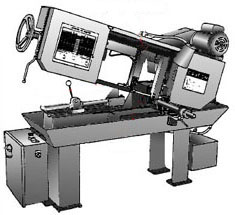Potential Hazards:
-
Workers may be
crushed at the point of operation, drawn into rotating parts, instantly electrocuted, or
mangled by other moving parts.
|
|
 |
Possible Solutions:
-
All power sources – electrical, mechanical, pneumatic, hydraulic –
must be shut off and
locked/tagged out
during machine maintenance. This includes power that is stored in a machine, such as
compressed air in a cylinder, after the machine is turned off. To achieve this, you must have a written
lockout/tagout plan that, for each machine, describes all power sources and the correct procedure
for shutting down, testing, and re-energizing the equipment. A plan should describe how
employees will be notified when a lockout/tagout is necessary, and shall require
employees to always
lock out or tag out equipment, using the appropriate procedures, before performing work on the
equipment.
- To develop your energy control program, inventory your equipment and
identify all power sources. Identify the lockout devices that you will need for
your particular machines. There are many commercially available devices for locking out electrical
switches, circuit breakers, valves, compressed-air lines, hydraulic equipment, and other power
sources. When feasible, affected employees must be given their own lock to use during lockout
procedures. If tagout devices are used in place of lockout devices, the tagout program must be as effective as
the lockout program. Train all affected employees about the company's plan:
the program
will only work if employees understand how to implement the correct
lockout/tagout procedures. OSHA’s standard, 1910.147, establishes specific requirements for
lockout/tagout programs.
|
|
|

